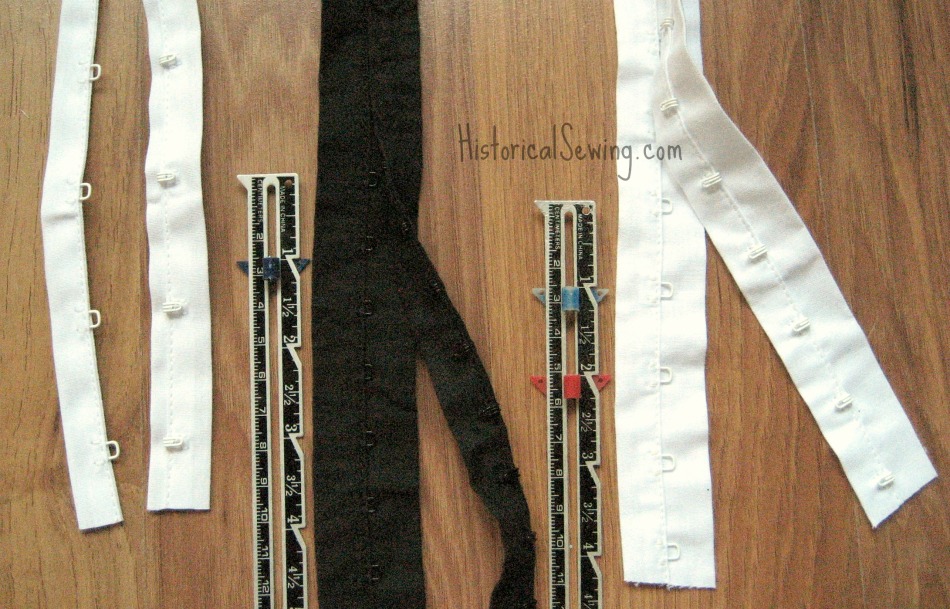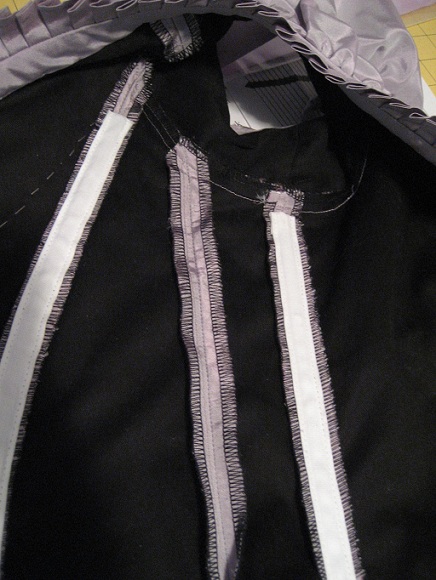The Regency Fashion Era (1795-1820) is a wonderful time of simple silhouettes, drape-able fabrics, and a freedom from tight dressing (as compared to the Rococo period before and Victorian Era after). With these delicate styles comes light closures – ones not to disturb the easy shaping. They are fairly simple. Basic really. Uncomplicated. And generally Read More...
Tag: Closures
Applying Hook & Eye Tape
Yay! You’ve just finished the bodice proper but now you are faced with hand sewing on a dozen little hooks and corresponding eyes so you can actually close the bodice. Boo… At this point many costumers let the garment sit. Not that it needs a time out, but that they are simply not looking forward Read More...
Modern Shortcuts for Historical Sewing (or how I cheat)
You know the routine – you didn’t allow enough time to finish your dress and now you’re having to cut corners to get it even *wearable.* I’ve been there. Early on in my costume sewing. Not so bad that I had to be sewn into my dress, but still pushing the clock til it was Read More...
Should You Sew Side Seams Last?
A current idea floating around to aid in getting closures lined up properly is to do them first. In other words, you finish the center front or center back fastenings first, then in your bodice construction you leave the side seams open until the very end. This allows you to fit at the side seams Read More...
Making Handsome Machine Buttonholes
You *can* make smart looking machine buttonholes. This is not a myth. For those of you who choose not to take the time (or can’t for whatever reason) to make handmade buttonholes you can use your machine to great effect. Now granted, hand sewn buttonholes are period correct until the sewing machine could produce zig-zag Read More...
1884 Feb Delineator Jackets
Taken from The Delienator magazine, the bodice/jacket in the top right has 25 buttons and the lower left jacket has 17 plus 12 on the vest. They sure loved their button closures! For a successful reproduction, look for a 3/8″ size. You could also get away with 1/2″ and *maybe* 5/8″. Read More...




